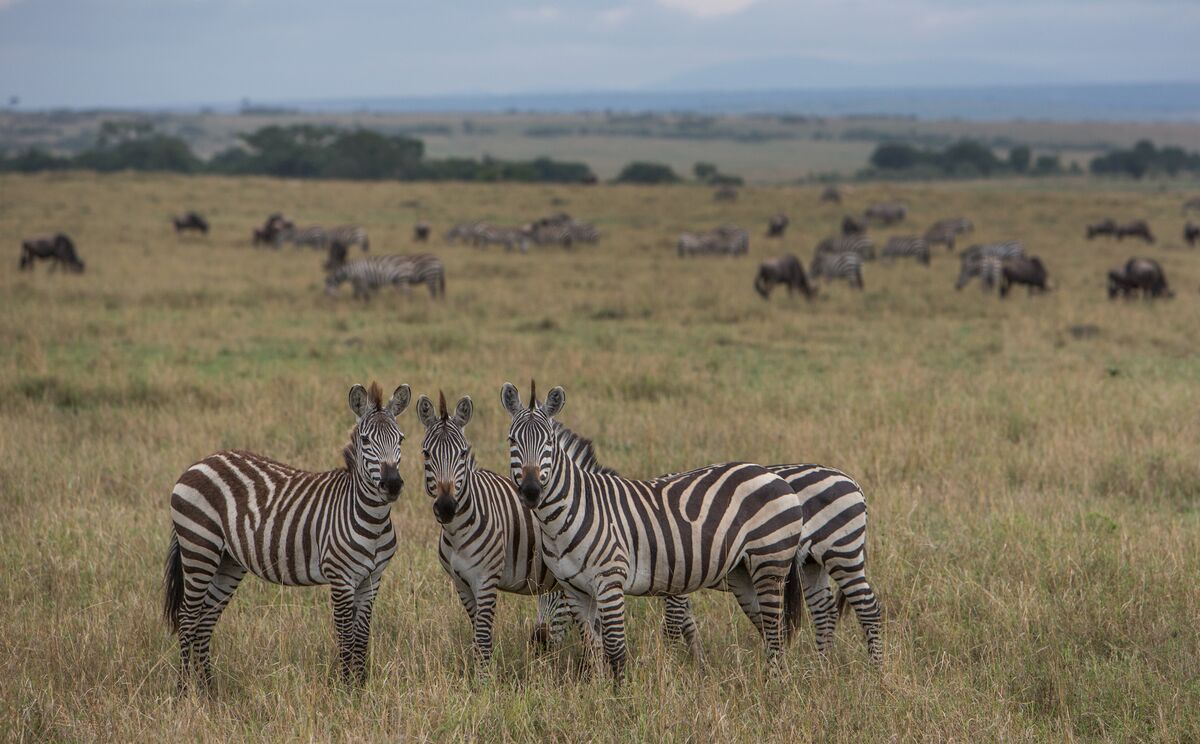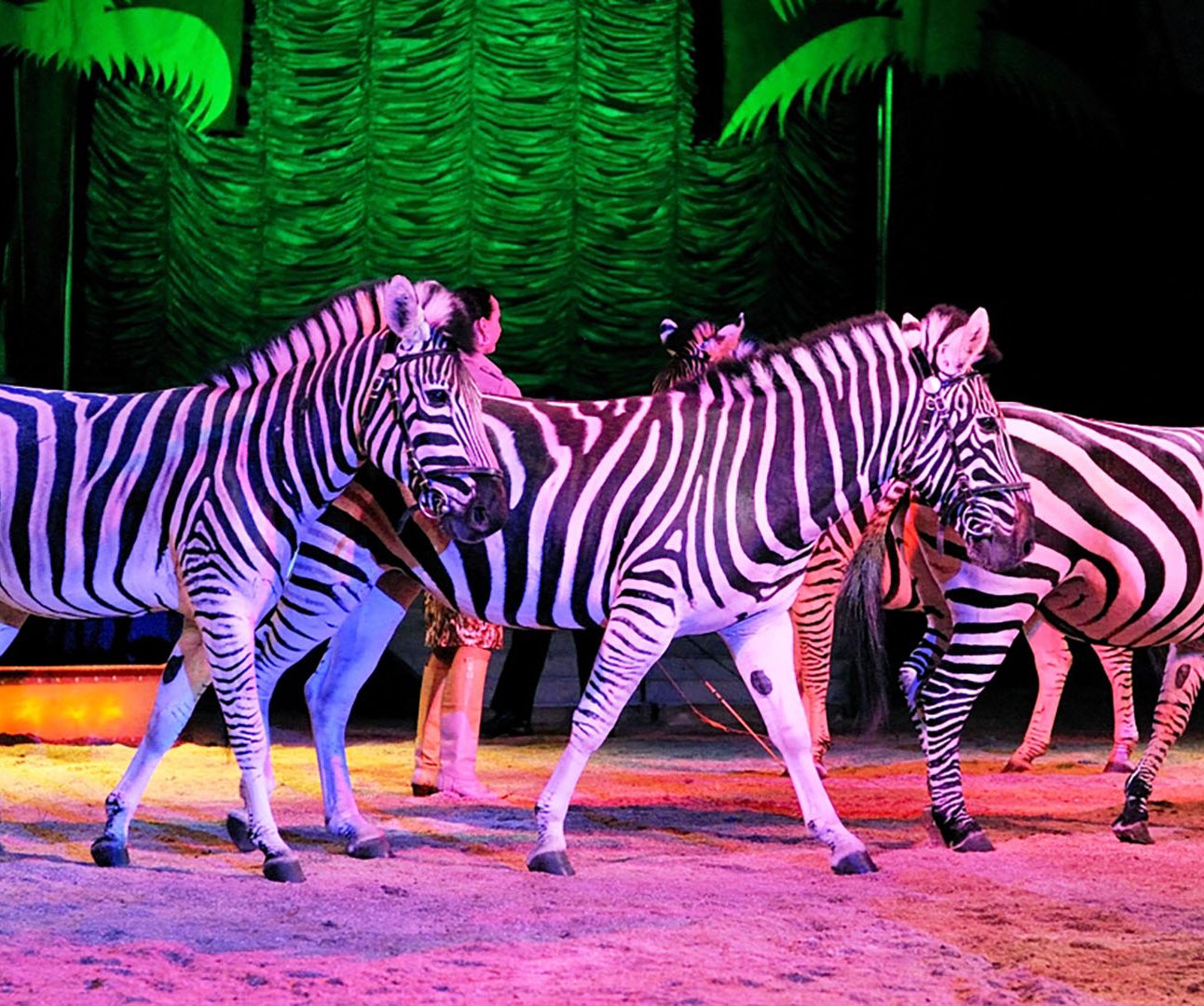
IUCN STATUS
Plains zebra (Equus quagga) – Near Threatened; Grevy’s zebra (Equus grevyi ) – Endangered; Mountain zebra (Equus zebra) – Vulnerable
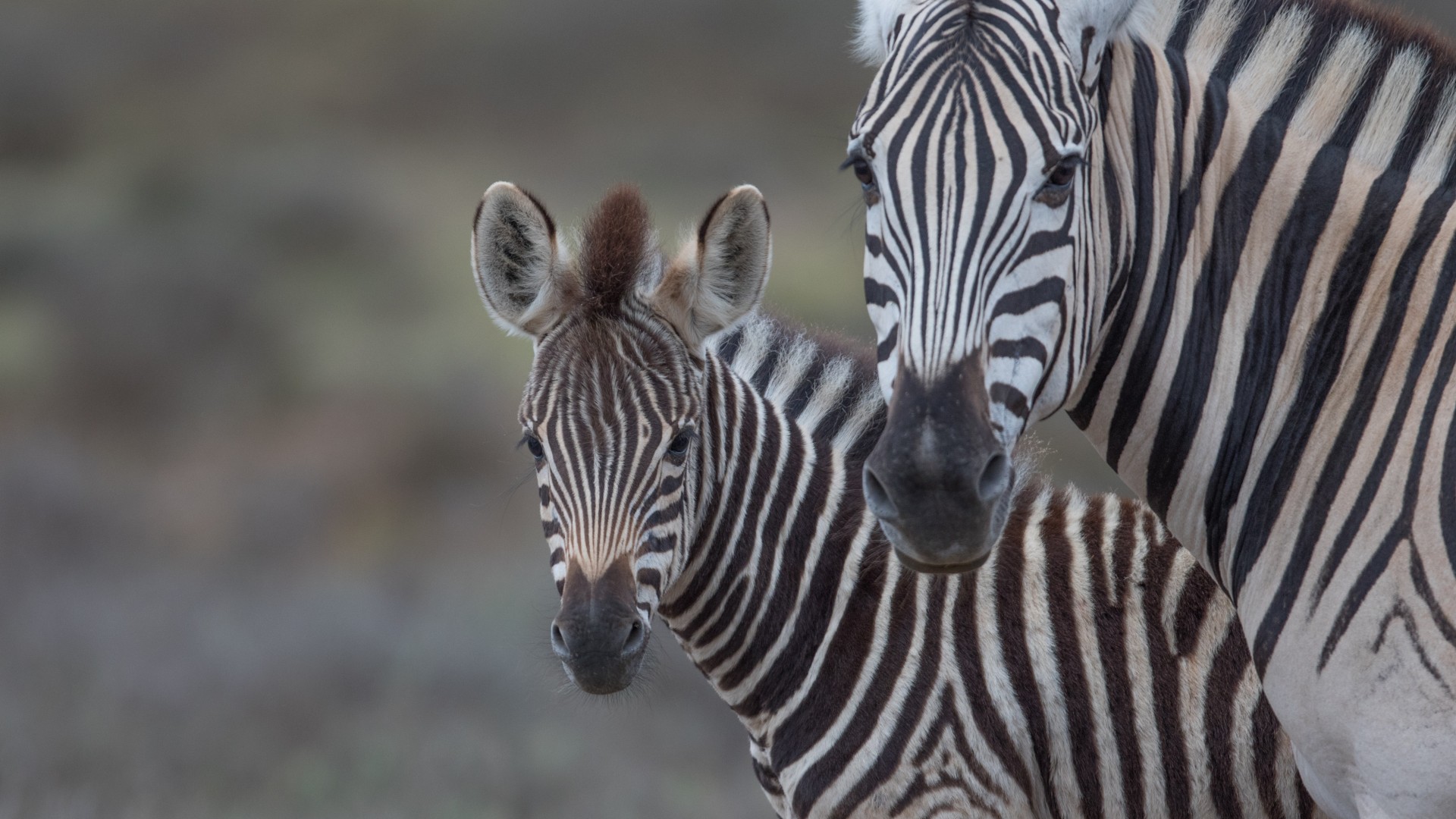
Equus quagga, Equus grevyi,
Equus zebra
Their foraging behaviour helps increase species diversity. When they migrate, they also play an important role in moving nutrients to different ecosystems through their dung.

Plains zebra (Equus quagga) – Near Threatened; Grevy’s zebra (Equus grevyi ) – Endangered; Mountain zebra (Equus zebra) – Vulnerable

Plains zebra: ~500,000* (~150,000-250,000 mature individuals), declining; Grevy’s zebra: ~2,680* (~1,956 mature individuals), stable; Mountain zebra: ~34,979* mature individuals, increasing. Last assessed 2016-2018
* According to the International Union for the Conservation of Nature (IUCN)

Herbivorous

Savannah, forests, shrublands

Eastern and Southern Africa

Weight: 200-450kg, body length: 2.5-3 metres, shoulder height: 1.35–1.5 metres.

Habitat loss, poaching and hunting
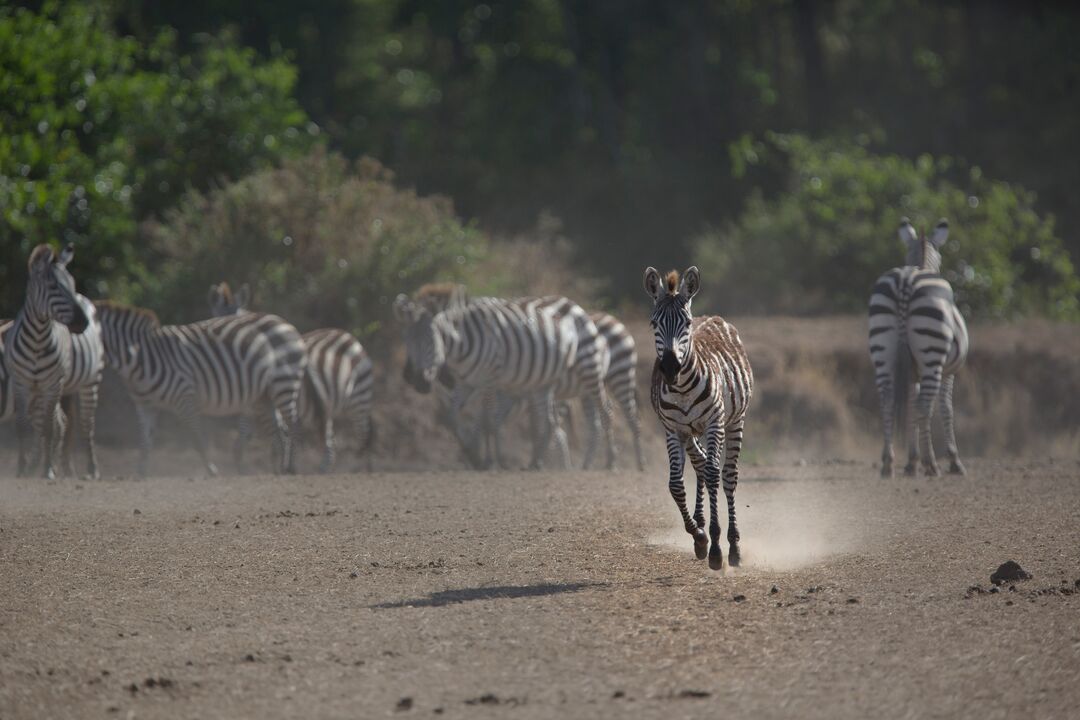
Plain’s zebra (Equus quagga) (c) George Logan
A group of zebras is commonly called a ‘dazzle’, named for the motion dazzle effect created by a group of running zebras.
Zebras are part of the horse family. There are three species of zebra found in the wild including the plains zebra, the Grevy’s zebra and the mountain zebra. Within these three species are multiple subspecies including six subspecies of plains zebra and two subspecies of mountain zebra.
There are some differences in appearance between the zebra species, but they are all easily recognisable with their distinctive striped markings which can be black or dark brown with white or creamy coloured stripes. Each zebra has a completely unique pattern of markings that can be used to identify individuals. There are several schools of thought to explain the stripes; they help camouflage zebras; they help cool the body; they are used in communication; and they help prevent biting or stinging flies. In all subspecies males are slightly larger than females.
The plains zebra, which is the most common and widespread subspecies, is found in most terrains except rainforest and deserts. However, zebras are typically only found inside protected areas. The Grevy’s zebra, which is only found in the Horn of Africa, specifically in Ethiopia and Kenya, lives in arid and semi-arid grasslands and shrublands. The mountain zebra, found in South Africa, Namibia and Angola, lives in rugged, mountainous areas.
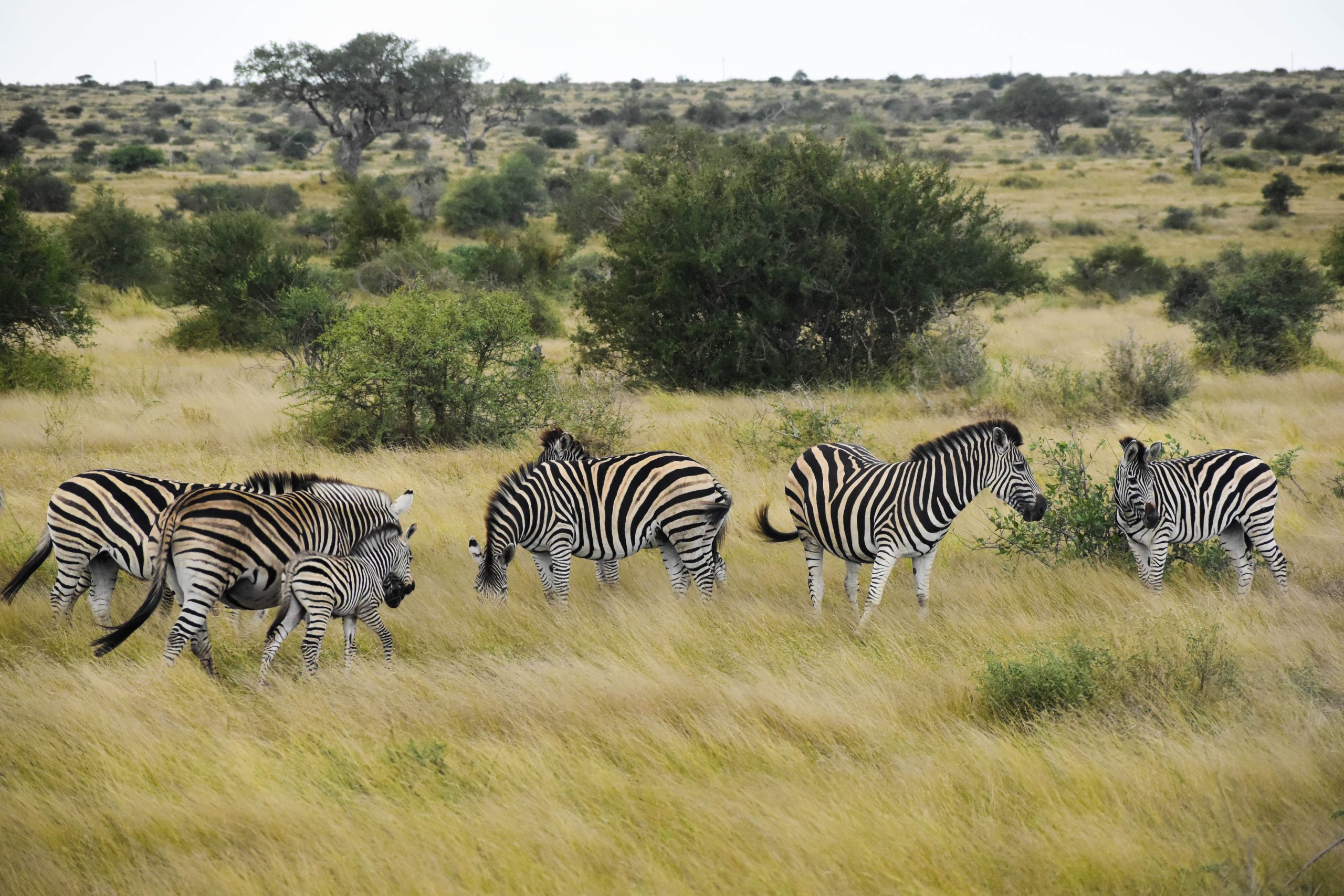
Plain’s zebra (Equus quagga) – paler ‘shadow’ stripes on its rump and stripes extending under belly (c) Simona Marinkova, Unsplash
Zebras are a migratory animal, moving across large distances to find food. Due to this movement, zebras are not territorial, and their home ranges will shift seasonally. They are highly social animals and live in family groups. Zebras have a ‘harem’ structure meaning that there is a single adult male, also known as a stallion, and one or more adult females and their offspring. Young males will stay with the harem until they reach sexual maturity and then leave either to remain alone, join bachelor groups or find their own harem. The stallion will lead his harem until his death or when he is unseated by younger males. However, harems may live amongst each other, coming together to congregate.
Zebras display many social behaviours including biting and chasing, neck wrestling, social grooming, head resting, greeting ceremonies, play and even defecation ceremonies. They also have several vocalisations that convey messages including alarm calls, snorts, squeals and barking sounds.
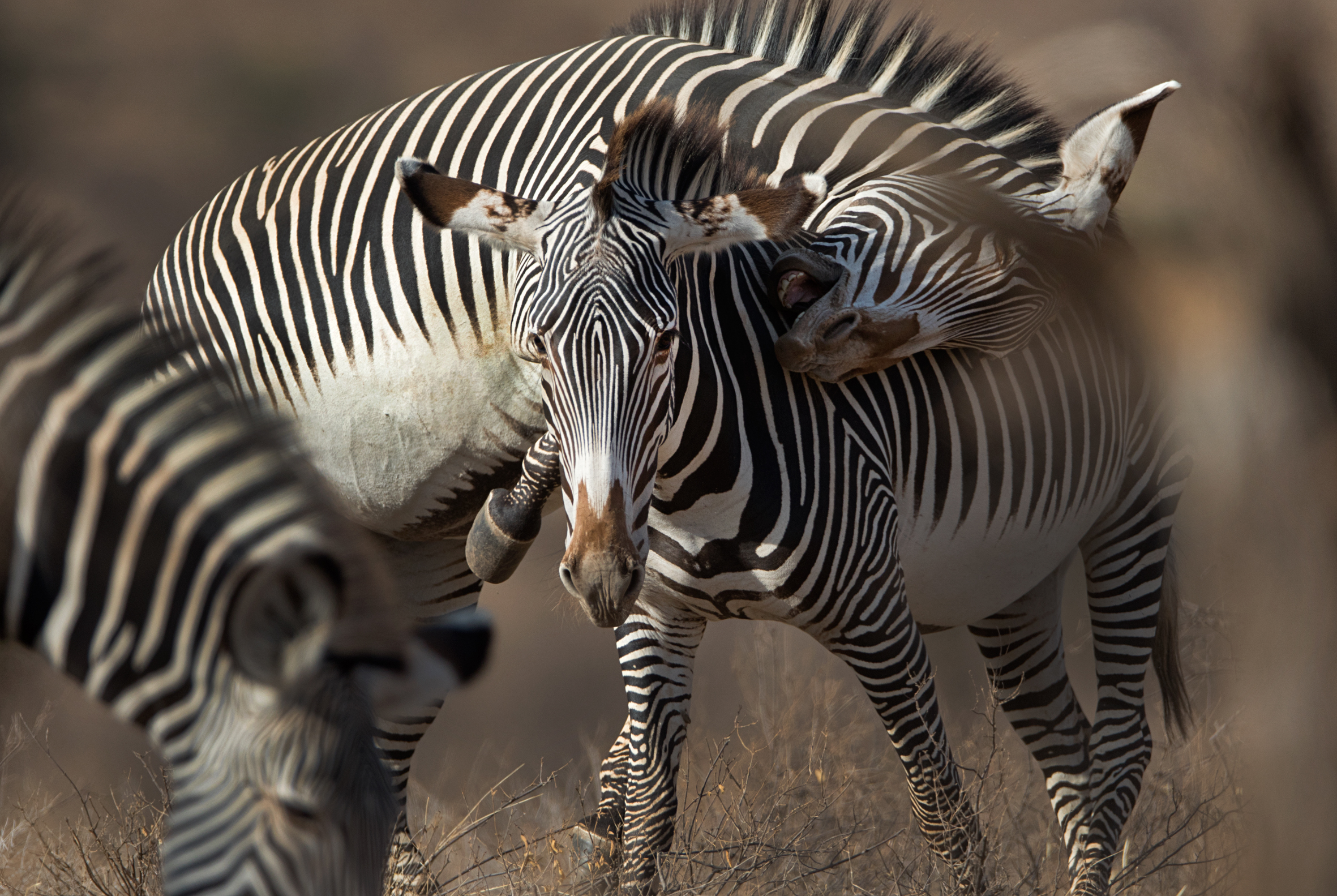
Grevy’s zebra (Equus grevyi) – white belly, finer stripes, large ears (c) George Logan
Zebra populations are declining in their range due to habitat loss and fragmentation. Habitat loss and fragmentation is being driven by human activities such as infrastructure development, agricultural expansion and livestock encroachment. With increased fragmentation, some zebra populations become more isolated and there is an increased risk of inbreeding. Habitat degradation also results in the loss of zebra migratory corridors. Increased competition with livestock for forage and water is also contributing to population decline.
Zebras are killed for their skins and meat, in some areas commercially, in others through poaching, and the rate they are killed may exceed their population growth causing significant reduction in population numbers.
